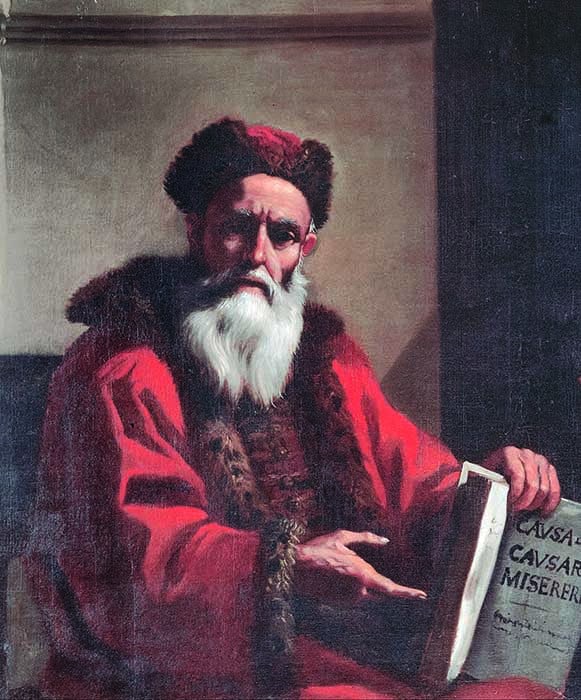Robert P Crease objects to those who claim – often in popular-science books – that science is the one and only road to reality

In the 1944 movie Gaslight, the character Paula (played by Ingrid Bergman) sees a gas-powered lamp in her room dim late at night. Unbeknownst to her, Paula’s husband Gregory (played by Charles Boyer) is sneaking into the attic to hunt for jewels. When he turns on the attic light, it depletes the gas in all the other house lamps. But Gregory has intimidated Paula into thinking that the dimming (and other things) are not real, that they are happening only inside her head.
These days, the term “gaslighting” is often used to refer to someone imposing their views of reality, such as a narcissist promoting false but seemingly believable stories in an unpleasant attempt to exert control over others. But in the sense inspired by the 1944 movie – and by its 1940 precursor of the same name – gaslighting refers to someone trying to delegitimize someone else’s experience.
I feel that same sense of delegitimization when I read certain popular-science books. They’re the ones suggesting that when I see, for example, a sunset or sunrise, I’m really just seeing the Earth spinning. I’m not observing rainbows, they say, but only reflections and refractions. I’m not seeing stars but only leftover glimmers of faraway objects that ceased to exist billions of years ago.
“Scientific gaslighters”, as I term them, want to foster an appreciation for science. But their strategy of delegitimizing ordinary human experience can have the opposite effect.
Turning the tables
Almost a century ago, the British astronomer Arthur Eddington identified the puzzle that gaslighters condescendingly attempt to solve. It arises in his 1928 book The Nature of the Physical World, which begins by describing two tables. One is a familiar, extended, coloured and motionless object. The other is the same table as dissected by science, consisting mainly of tiny electrical charges swarming in empty space.
Physicists, Eddington said, may claim that the scientific table is “the only one which is really there” – but they will “never succeed in exorcizing” the table of ordinary experience. Eddington admitted he was unsure how the two tables are related, saying that the question lies outside the scope of physics. Gaslighters, however, are certain. Only the scientific table is real and the ordinary one is just in our heads. There is no need to relate them.
It’s fortunate that Eddington didn’t ditch his ordinary table. For even as he was writing his book, quantum mechanics was being developed, forcing Eddington to rewrite some of his manuscript. Evidently, even “scientific” tables can be defective and swapped for newer models. But Eddington was wise to say that ordinary experience can’t be exorcised: indeed, it’s the precondition for any knowledge at all.
Consider the optical illusion where two parallel lines appear to lie at an angle. To correct the illusion, you absolutely need ordinary experience. That’s because to understand how the bowed lines relate to the straight ones, you need to play around and acquire more experience. Those experiences aren’t irrelevant; they enrich your knowledge so that you know what’s going on.
It’s a theme touched on by the German philosopher Edmund Husserl (1859–1938), who towards the end of his life began an essay called “The original ark, Earth, does not move”. The editors of his posthumous works thought this sounded too absurd and retitled it “Foundational investigations of the phenomenological origin of the spatiality of nature”. But the point of the essay was exact. Experiencing a non-moving background environment is not a mistake, Husserl argued, but a precondition for us to develop a sense of movement and to be able to model ourselves on a moving Earth.
Enter the cave
Scientific gaslighters love the famous “cave” allegory of Plato’s Republic. Written 2500 years ago, it describes prisoners who are chained in their seats and can experience only images on a wall. What these cave-dwellers don’t realize, however, is that they are only seeing shadows projected by influencers behind them. According to scientific gaslighters, people today are like the cave-dwellers – except that we have this wonderful thing called science to tell us about the real world outside.

Whose cave is it?
This is an illiterate way to read the Republic. In Plato’s story, the cave-dwellers liberate themselves with the help of a teacher, who turns them around to see for themselves what’s happening in the world, preparing them perhaps to see a little more. The teachers are not telling the cave-dwellers what to believe. After all, why should we believe what might be yet another crowd of influencers whose words we should take with a grain of salt?
Most inconveniently for gaslighters, though, is that Socrates – the one who speaks in Plato’s Republic – only uses the cave image to inspire his students. Education is a long, arduous and neverending path and he wants to encourage them. Plato’s cave is only a story, like the one the gaslighters are telling. The cave doesn’t actually have an outside.
The critical point
The gaslighters’ motive is educational and benign, for they want to encourage people to appreciate the wonders of science. But there is a danger in distinguishing between ordinary experience and what scientists say that experience is about. By labelling only the latter as “real”, it encourages the notion that there is a class of elite influencers (i.e. scientists) who think they possess the truth, while the rest of the population (i.e. non-scientists) are confused and misled.
By essentially mocking non-scientists, this makes it easier – seemingly justified – for people to ignore the claims of the elites as untrustworthy. Maybe sea levels are not rising, glaciers not melting. Maybe vaccines cause autism. Maybe the rising amount of human-produced carbon dioxide in the atmosphere – if that’s even true – is not responsible for global warming. Who knows? Why trust those influencers?
The alternative would be to do what the teacher in Plato’s story does. The teacher does not try to tell the cave-dwellers what to believe about the world. Instead, the teacher turns them around so they can see for themselves, helping them connect these new experiences with their former ones. That’s what would undim the lights.



